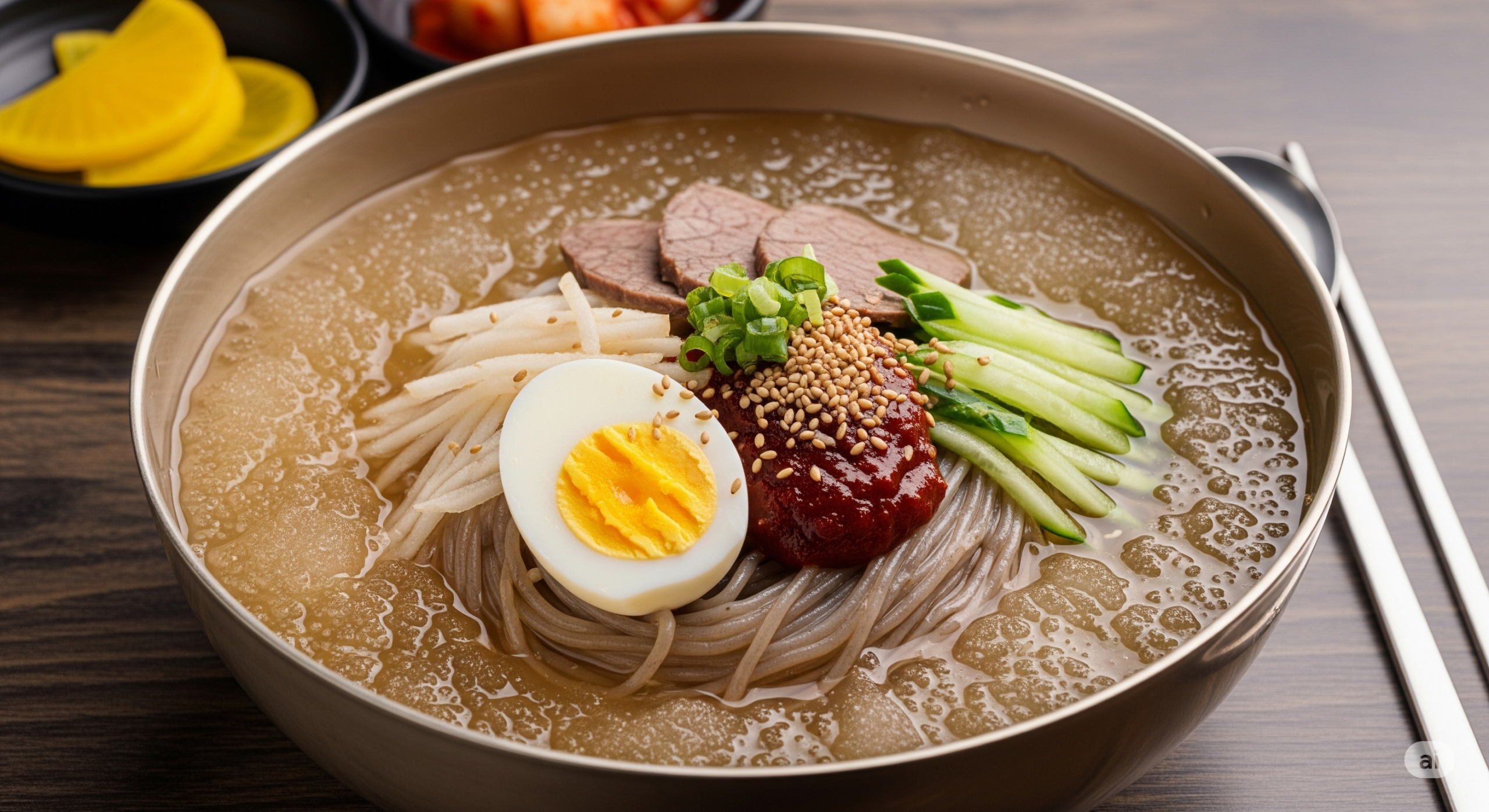1. A Summer Delicacy: Naengmyeon
In the hot summer, cold naengmyeon is a popular choice for many. It is common to think that mul-naengmyeon, with its clear and cool broth, is a lighter and healthier choice than bibim-naengmyeon, which has a gochujang-based sauce.
2. The Pitfall of Mul-naengmyeon Broth
However, the broth of mul-naengmyeon is not simply made from meat stock and dongchimi (radish water kimchi) broth. The broth in most restaurants has significant amounts of sugar, vinegar, and sometimes even soft drinks like cider added to create a savory and refreshing taste.
– The Danger of Liquid Sugar: The ‘liquid fructose’ dissolved in the cold broth is a major culprit that is absorbed very quickly by our body, causing a sharp rise in blood sugar.
– The Misconception of a ‘Light Taste’: Just because the sweetness is masked by the salty, sour, and cold temperatures does not mean it’s not there. You may be consuming a large amount of simple sugars without realizing it.
3. Comparison with Bibim-naengmyeon
Of course, the gochujang-based sauce of bibim-naengmyeon also contains a lot of sugar and syrup. Therefore, it is difficult to say that one is ‘always better’ than the other. With mul-naengmyeon, you risk consuming more liquid sugar if you drink all the broth, while bibim-naengmyeon’s more stimulating sauce might lead to overeating. Both types use noodles made from refined flour or starch, so the noodles themselves raise blood sugar quickly in either case.
Summary: Contrary to its clear-broth image, the soup of mul-naengmyeon can contain a significant amount of hidden sugar. Both mul-naengmyeon and bibim-naengmyeon are dishes that require caution for blood sugar management. The better approach is to avoid drinking the broth and to control the portion of noodles.


Leave a Reply